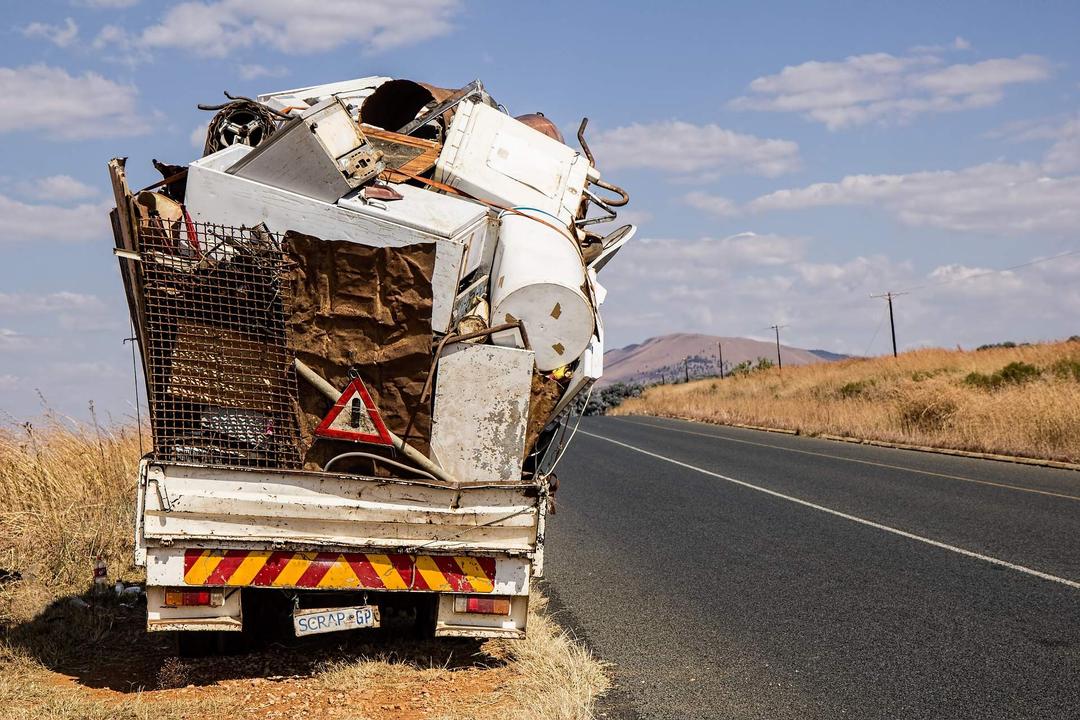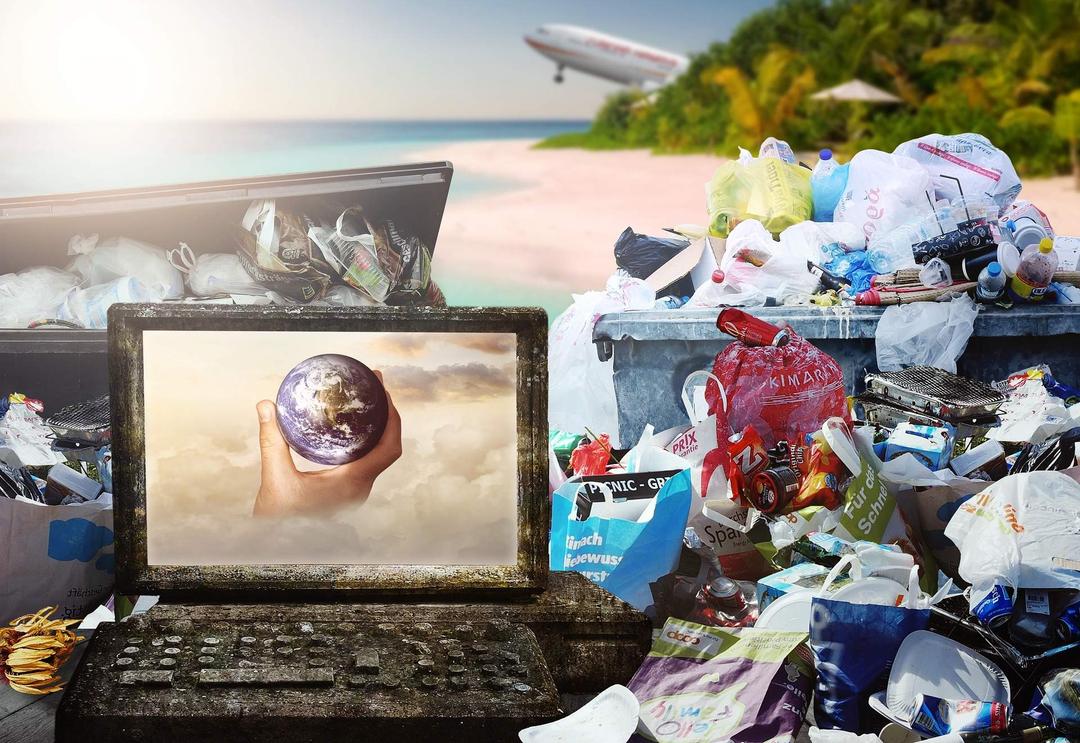How Is Waste Collected & Where Is It Taken?
2 November 2022, By PLAEX Technologies
Estimated time to read: 6 minutes

We are all accustomed to this stage of the waste cycle, whether it involves regular waste pickup at your home or dumpster service at your place of business. Your garbage is collected by a transporter, who then delivers it to a landfill or a transfer station. However, you might be surprised by how far it travels.
In this blog, we are going to outline how waste is collected, as well as, where it is taken after collection.
By doing so, there will be a clear insight on waste collection, how our trash and recyclables are separated, what happens to our recyclable waste, and lastly how can we reduce our waste and save energy.
Let's dive in!
Waste Disposal And Solid Waste Collection

When waste is collected, it goes through a disposal system. People often regard this as waste collection.
However waste disposal and solid waste collection are not particularly the same concepts and we will break this down to you in further detail.
What is waste disposal? The answer is pretty simple.
Waste disposal can be classified in numerous terms such as waste collection, waste processing, and waste recycling or depositing.
When undergoing waste disposal, the source and composition of waste are categorised.
Waste materials can generally be classified as either liquid or solid waste, and its constituent parts can either be dangerous or inert in terms of how they affect human health and the environment. Solid waste, wastewater, hazardous waste, and electronic waste are all commonly referred to as waste.
Municipal liquid waste is routed through sewage systems in developed nations, where it is treated as sewage or wastewater.


Municipal solid waste, sometimes known as refuse, is nonhazardous solid waste that must be collected and transported to a processing or disposal location. Garbage and waste are included in the refuse. Decomposing food waste makes up the majority of solid waste, which also consists primarily of dry materials like glass, paper, cloth, or wood.
Hazardous waste is defined as solid or liquid waste that poses a risk to the environment or public health. Materials that are poisonous, reactive, ignitable, corrosive, infectious, or radioactive are considered hazardous wastes.
Electronic waste, often known as e-waste, is electronic equipment that has lost its value to consumers or that no longer serves its original purpose due to replacement, breakdown, or redundancy.
Even though e-waste contains mixtures of highly poisonous compounds that should be regarded as hazardous materials when disposed of (such as lead and cadmium in computers and cell phones), it also contains non-recyclable materials that end up in the municipal solid waste stream. This includes plastic waste, as well as, carbon which are used to make new electronic products or items.

How Our Waste Recyclables Are Separated
Before delivering waste, recyclables, and other waste materials to the proper location, which is typically a recycling facility or waste landfill, a waste transfer station accepts and sorts them.
In addition to recycling, the waste sorting process frequently contributes to resource conservation because the large pickup collectors don't have to travel as far to the waste landfill.
With that being said, let's take a look at how our waste is recycled and later separated.
To eliminate recyclables like plastic bottles, paper objects, and metal objects, household waste is first separated. Workers wear hazmat suits and facial protection during this labour-intensive process to prevent health concerns.
In actuality, 93.9 million tons of waste were recycled in the United States of America as of 2018, and several states in the country have imposed legislation which requires recycling.
Here's a fun fact. The Netherlands comes in second place among OECD (Organisation for Economic Co-operation and Development) nations in terms of recycling rates, at 80%.
Construction and demolition waste account for the majority of waste generation. Primary raw materials can be replaced by recycled waste, which lowers the need for them. Recyclable materials are shipped to neighboring recycling facilities to be prepared for reuse after being sorted.
In some places, you can recycle good-condition items like furniture, bicycles, and books by sending them to a used-goods shop.
At PLAEX Technologies, we produce smart waste bins that automatically sort recyclables for you.
GARBY is an automatic waste sorting machine that uses Artificial Intelligence (AI) to do all the work for you and hence help you sort waste recyclables.
How Our Waste Recyclables Are Separated
When managing, sorting, and processing waste, many resources are used, from transportation to treatment.
The collection and transportation of the waste represent the clearest source of energy use in waste management.
However, that typically only accounts for a small portion of the initial energy needed to produce and ship the goods, and it ignores the methane and other greenhouse gases that are released during the production, shipping, and decomposition of the solid waste before and after the consumer uses it.
While waste landfills make every effort to maintain a safe environment, you can help by making efforts to cut solid waste at home. Here are some suggestions for lowering residual waste:
- hen possible, reuse products as much as you can, and recycle waste appropriately.
- To prevent waste when those products are no longer desired, choose to acquire practical items rather than impulsive items.
- Buy things with the least amount of packaging and waste by planning ahead.
- Purchase durable, high-quality goods to lessen how frequently you must discard and replace them.
Final thoughts:
The amount of waste generated is a sign of environmental pressures. Different tactics are used to lessen the environmental challenges brought on by trash creation.
The best strategy is to reduce waste production as much as you can. Reuse, recycling, recovery, energy recovery, incineration, and trash disposal are further methods of landfilling.
Removing waste from landfills and replacing it with recycling and resource recovery eases environmental pressures.
Furthermore, the green growth approach depends on waste being effectively recycled and reused because doing so frequently has less of an impact on the environment than using raw materials.
Recycling generates more jobs than alternative trash disposal techniques while preserving the material's fundamental worth.
At PLAEX, our team of dedicated professionals and experts can help your business drastically with brilliant Artificial Intelligence Technology that incorporates and makes use of AI with automatic waste sorting bins.
How would you like to be part of the change to a more sustainable future?
Contact us and let's see how we can solve your waste management issues and adopt sustainable practices.
Remember: It's not complex, it's PLAEX.